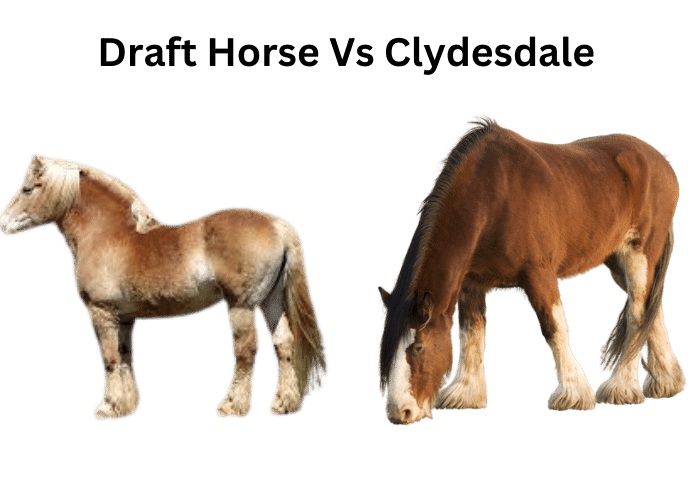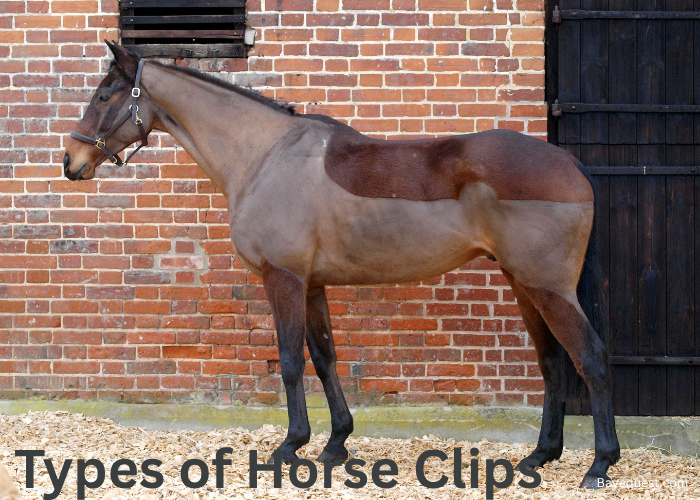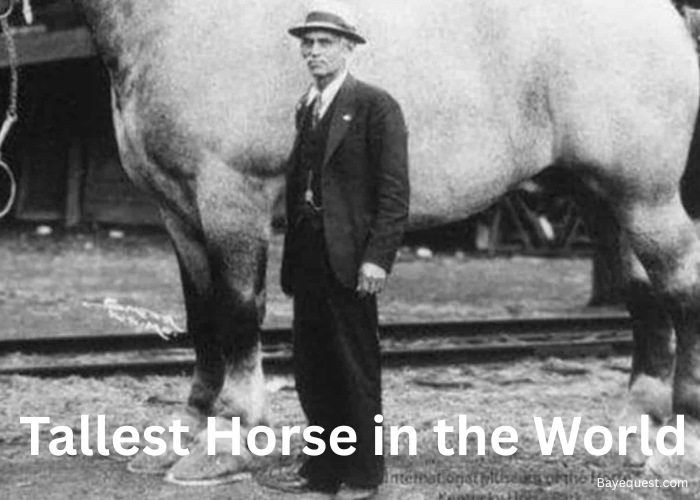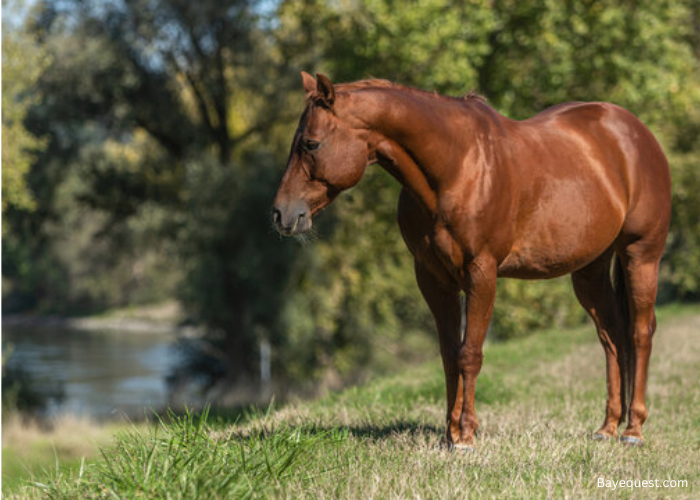In the realm of giants, where muscle meets grace, the draft horse stands as the unsung hero of the equestrian world. These are not just any horses; they’re the powerhouses of the horse family.
But among these titans, there’s one breed that often captures the spotlight—the Clydesdale. Welcome to our exploration of the grandeur and grace of the draft horse vs Clydesdale.
We shall dive into what sets these magnificent creatures apart and binds them together. So, saddle up as we trot through the journey of understanding these breathtaking animals.
Difference Between Draft Horses and Clydesdales: Key Takeaway
Draft horses are strong, hardworking giants used for heavy tasks. Clydesdales, a flashy Scottish type, stand out with feathered feet and showy parades. While most draft horses live 18–20 years, Clydesdales can reach 25. Both are powerful, but Clydesdales add a touch of charm to their muscle.
What are Draft Horses?
Draft horses are the gentle giants of the horse world. Picture this: a horse so big, so strong, that it seems like it walked out of a fairy tale.
These horses were bred for power, pulling heavy loads that were too much for any other horse. But don’t let their size fool you; they are as gentle as they are strong, known for their calm and friendly nature.
Back in the day, these horses were the engines of the farm and the battlefield, pulling plows, carts, and artillery.
Today, they might not be as common in the fields, thanks to tractors and machines, but they’ve found new roles. They’re stars at shows, parades, and even therapeutic riding programs, touching lives with their calm presence.
Draft horses come in various breeds, each with its unique flair. From the towering Shire, the flashy Belgian, to the hearty Percheron, each breed brings something special to the table.
So, when you think of a draft horse, think of strength and serenity wrapped in one massive, feather-footed package.
They’re not just working animals; they’re a living link to our past and a reminder of the strength found in gentleness.
What are Clydesdales?
Clydesdales are like the celebrities of the draft horse world. They are stunning, with feathered feet that dance as they move, and a presence that just can’t be ignored.
These horses hail from Scotland, named after the River Clyde that flows through the region where they first trotted into heart and history.
Clydesdales are big, but it’s not just their size that turns heads. It’s their beautiful coats, often bay in color, marked with white splashes on their faces and legs, and those distinctive, flowing feathers around their hooves.
They’re like the elegant, well-dressed folks of the horse world, catching eyes wherever they go. But Clydesdales are more than just pretty faces.
They were bred for hard work, originally tasked with hauling heavy loads in and around Glasgow. They were the power behind industries, moving heavy goods when heavy machinery was just a dream.
Today, while their roles have shifted, their legacy of strength and elegance remains. You might see them in parades, shows, or even gracing commercials, symbolizing strength and beauty in equal measure.
Draft Horse Vs Clydesdale: In Depth Comparison
Let’s dive into the world of draft and clydesdales, comparing them feature by feature:
Clydesdale Vs Draft: Breed origins
Draft horses have a story that spans continents and centuries. These horses were bred across Europe and America, each breed designed to suit the heavy work of its region.
From farming to pulling heavy loads, draft horses were the muscle behind the growth of societies.
Clydesdales, on the other hand, have a more specific birthplace: Scotland. Born by the River Clyde, they were Scotland’s answer to the need for a horse that could handle the demanding agricultural and industrial work.
So, while draft horses have roots all over, Clydesdales started in a Scottish river valley.
Clydesdale Vs Draft Horse: Coat colors and markings
Draft horses come in many colors, from solid blacks and bays to dappled greys and roans. Their coats are as varied as their origins, with each breed boasting its own preferred hues.
Clydesdales are famous for their striking bay coats, often complemented by white markings. These include flashy white faces, long, white stockings on their legs, and sometimes, white splashes on their bodies.
It’s their coat and markings that often make people stop and stare.
Draft Horse Vs Clydesdale Horse: Conformation
The conformation, or body structure, of draft horses is built for power. They have broad chests, strong, muscular backs, and sturdy legs.
However, each breed has its own nuances, but the theme is consistent: strength.
Clydesdales share this powerful build but with a touch of elegance. Their legs, adorned with flowing feathers, add a distinct grace to their strong frame. This combination of might and beauty is what sets Clydesdales apart.
Clydesdale Horse Vs Draft Horse: Height and weight
Draft horses are giants, standing anywhere from 16 to 19 hands tall. They can weigh from 1,400 to over 2,000 pounds, depending on the breed. This size enables them to perform the heavy-duty tasks they were bred for.
Clydesdales are at the higher end of this scale. They usually stand around 17 to 18 hands tall, with some reaching up to 19 hands. They weigh in at about 1,800 to 2,200 pounds. Their large frame is not just for show; it’s a testament to their strength.
Related read: Clydesdale’s average weight.
Clydesdales Vs Drafts: Popularity and commercial use
Draft horses, as a group, are beloved for their strength and versatility. They’re seen in parades, on farms, and at historical demonstrations. Each breed has its niche, from logging in forests to pulling carriages in urban tours.
Clydesdales, particularly, have a unique star status, thanks in part to their use in commercials and as mascots. Think of the famous beer commercials featuring majestic Clydesdales pulling a wagon. These images have made them symbols of tradition and quality worldwide.
Drafts Vs Clydesdales: Life expectancy
A draft horse’s lifespan often reflects its steady, peaceful lifestyle. With open fields, gentle work, and companionship, these giants live 18 to 25 years, and sometimes longer with proper care.
Whether pulling a plow or leading a parade, a well-loved draft horse can enjoy a long, healthy life.
Clydesdales, those Scottish icons with feathered feet, often enjoy even longer lives, stretching up to 25 years. Perhaps it’s the care they receive as living legends, or maybe it’s just their hardy nature.
Either way, these horses are in it for the long haul, providing years of joy and service to those around them.
See more here: Clydesdale Horse Lifespan.
Draft Horses Vs Clydesdales: Temperament
When you meet a draft horse, you’re greeted with a calm, steady presence. These horses are the epitome of the phrase “gentle giant.”
Their temperament is a mix of patience, kindness, and a willingness to work. This makes them not just powerful workhorses but also beloved companions.
Clydesdales, in particular, are like the friendly giants of the horse world. They’re known for their good-natured spirits and approachability. Despite their impressive size, they have a way of making themselves approachable.
This makes them not just a favorite for work and show, but also for therapy and educational programs.
Draft Vs Clyesdale: Population and preservation
The population of draft horses has seen ups and downs. This has been influenced by machinery replacing traditional farming and transport roles.
Efforts are ongoing to preserve these breeds through registries and enthusiasts dedicated to maintaining their numbers and genetic diversity.
Clydesdales have also faced population challenges, but dedicated breeding programs in Scotland and beyond have helped stabilize their numbers.
They’re considered a breed of “least concern” now, thanks to these efforts, but conservation remains crucial.
Draf Vs Clydesdale Horses: Price
The price of a draft horse varies widely based on breed, age, training, and pedigree. On average, you might expect to pay anywhere from $3,000 to $10,000. Specialized or highly trained individuals can command higher prices.
Clydesdales, particularly those with desired traits for show or commercial use, can be quite pricey. A well-bred Clydesdale costs around $1,000 to over $5,000, with top specimens or those from renowned lines fetching even more.
Comparison Chart: Draft Vs Clydesdale
| Feature | Draft Horse | Clydesdale |
| Origin | Europe and America | Scotland |
| Coat color and markings | Can include blacks, bays, greys, and roans | Bay with white face and leg markings |
| Conformation | Broad chests, muscular backs, sturdy legs; built for power | Similar powerful build but with distinctive, flowing leg feathers. |
| Height and weight | 16 to 19 hands tall 1,400 to over 2,000 pounds | 17 to 18 hands tall1,800 to 2,200 pounds |
| Popularity and use | Used in parades, farming, logging, and historical demonstrations; varies by breed | High visibility in commercials, parades, and shows due to iconic status |
| Life expectancy | 18-20 years | 20-25 years |
| Temperament | Calm, willing, and gentle nature | Gentle and friendly |
| Population and preservation | At risk and subject to conservation efforts | Stable, with dedicated breeding programs helping maintain their numbers |
| Price | $3,000 to $10,000 | $1,000 to over $5,000 |
Related read: Clydesdale Vs Regular Horse.
Clydesdale Vs Draft Horse Verdict
Choosing between a Clydesdale and a draft horse isn’t about finding which one is better. It’s about finding which one is right for you. Each has its own charm and utility.
If you’re drawn to tradition, elegance, and a bit of fame, the Clydesdale, with its distinctive look and gentle nature, might be your star.
They’re perfect for those who value grace as much as strength, and who might enjoy the spotlight that comes with owning such a recognizable breed.
On the other hand, if versatility, variety, and a straightforward work ethic appeal to you, a draft horse from one of the many breeds might be a better fit. They offer a range of sizes, colors, and capabilities.
Your choice might come down to specific needs, personal taste, or even the particular horse’s personality that you connect with. In the end, both are incredible equine companions, each with the ability to enrich lives in their own unique ways.
Interesting read: Clydesdale Vs Shire Horse.
Conclusion
So, there we have it—the tale of the draft horse and the Clydesdale. It’s not a story of who’s better, but of what makes each one special.
Whether it’s the diverse strength and colors of the draft horses or the iconic elegance of the Clydesdales, both have a place in the tapestry of our lives. They remind us of the beauty in strength and the grace in power.
Choosing between them isn’t about picking the best, but about finding the one that speaks to your heart. So, next time you see these gentle giants, remember, each has its own story, just waiting to be part of yours.








